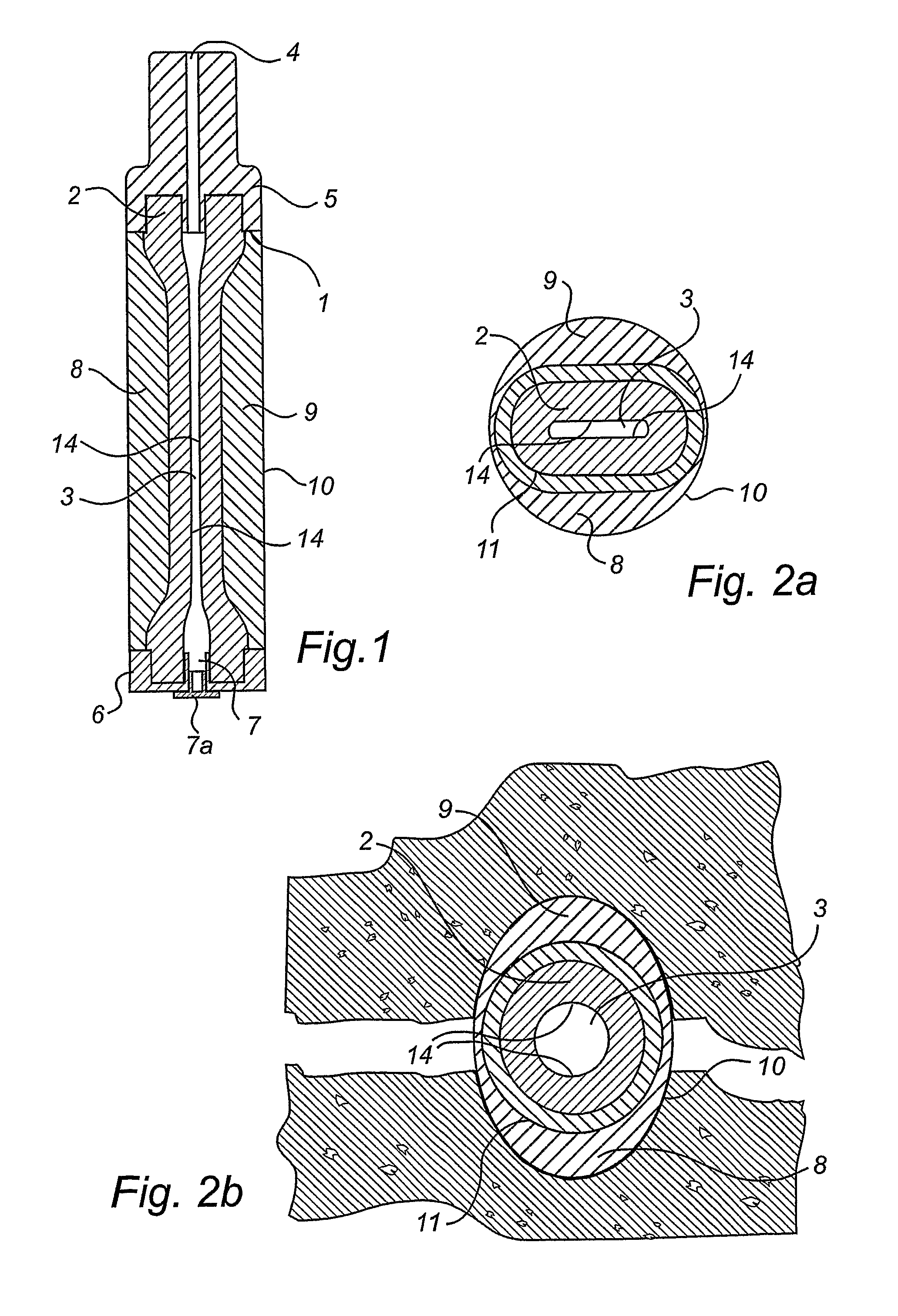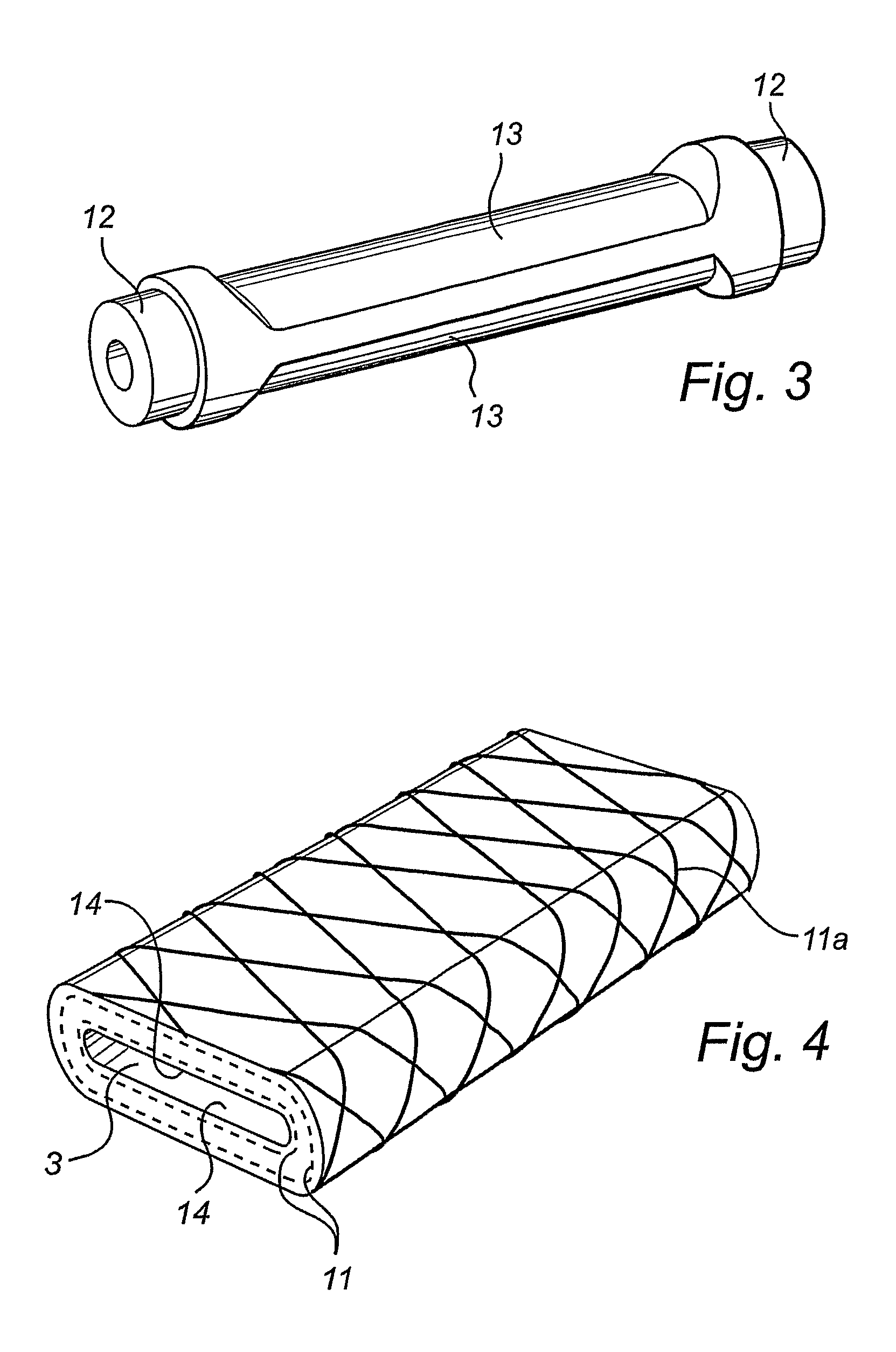Device for breaking solid material and method of manufacturing a hose element for such a device
a technology of solid material and hose element, which is applied in the direction of disloding machines, construction, building repairs, etc., can solve the problems of limited use, inability to use, and large problem of handling explosives
- Summary
- Abstract
- Description
- Claims
- Application Information
AI Technical Summary
Benefits of technology
Problems solved by technology
Method used
Image
Examples
Embodiment Construction
[0028]FIG. 1 shows a device 1, comprising a hose element 2 made of preferably a conventional reinforced hydraulic hose which in its centre portion, seen in the longitudinal direction, is flattened so as to form an expansion chamber 3, which has one or more inner pressure surfaces 14. These broad pressure surfaces 14, which act outwardly seen from the longitudinal axis of the hose element 2 and form the directed pressing part of the hose element 2, generate a high pressure in the initial phase which successively decreases as the hose element 2 returns to a rounded, substantially cylindrical shape. At one of its ends, the hose element 2 has a coupling 5 connected to a pressure source (not shown) from which fluid enters through the opening 4 of the expansion chamber 3 to be subsequently stopped by a coupling 6, which constitutes the stop for the fluid but can be opened if a plug 7a is removed from the opening of the coupling 7. This makes it possible to connect more than one expansion ...
PUM
| Property | Measurement | Unit |
|---|---|---|
| radial distance | aaaaa | aaaaa |
| distance | aaaaa | aaaaa |
| cylindrical shape | aaaaa | aaaaa |
Abstract
Description
Claims
Application Information
 Login to View More
Login to View More - R&D
- Intellectual Property
- Life Sciences
- Materials
- Tech Scout
- Unparalleled Data Quality
- Higher Quality Content
- 60% Fewer Hallucinations
Browse by: Latest US Patents, China's latest patents, Technical Efficacy Thesaurus, Application Domain, Technology Topic, Popular Technical Reports.
© 2025 PatSnap. All rights reserved.Legal|Privacy policy|Modern Slavery Act Transparency Statement|Sitemap|About US| Contact US: help@patsnap.com



